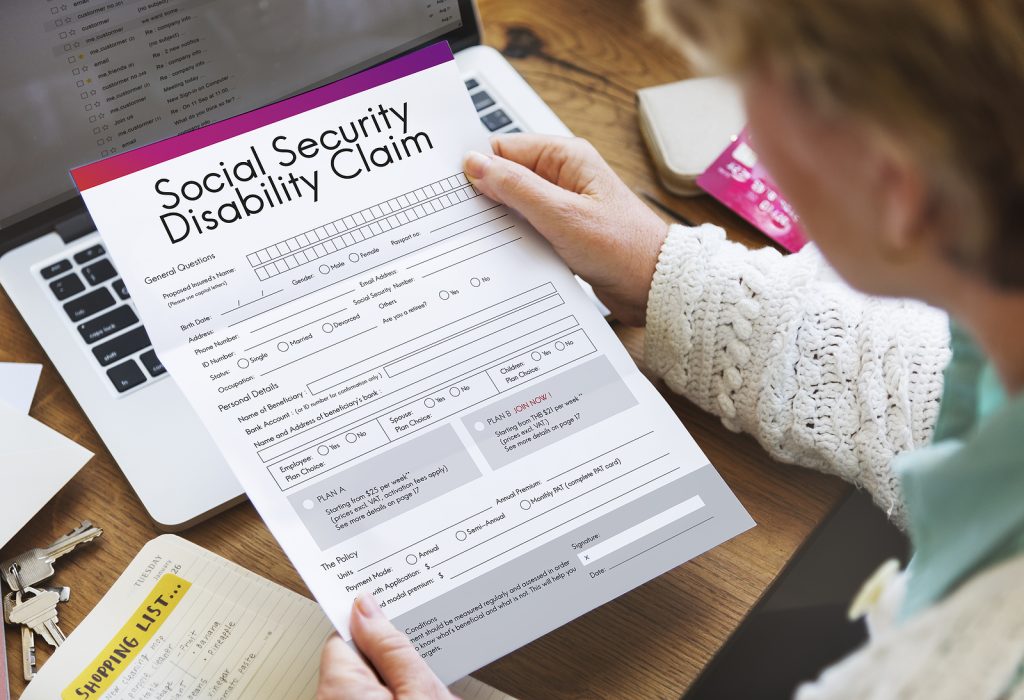What Are Some Facts You Must Know About the SSA’s Blue Book?
When applying for SSA disability benefits, the agency will almost always refer to their “Blue Book” to determine if your unique disability prevents you from working and entitles you to disability benefits.
Understanding exactly what the SSA’s Blue Book contains will significantly help your application process and possibly show how likely you will be approved.
The SSA’s Blue Book is a very comprehensive list of all the disabling impairments, in detail, that could automatically qualify you as “disabled” and therefore eligible for Social Security disability benefits. The Blue Book explains these disabilities and their requirements in depth. It is commonly the main guideline the Social Security Administration uses when deciding on your case’s validity.
The SSA’s Blue Book contains vast information about disabling impairments and the agency’s criteria when deciding to help those applying for benefits. It covers a lot of the recommended medical evidence, as well, and it can be beneficial. This valuable tool is available online and updated regularly, and if your disability is listed, it can significantly help win your case.
However, you must note that the Blue Book is highly technical and might find it confusing and challenging to understand. Therefore, evaluating your case and its relation to the Blue Book criteria should always be done by a professional SSDI lawyer who is highly experienced in these matters.
You must also note that with the proper representation, even if your disability is not listed in the Blue Book, you can still be found disabled by the SSA and qualify for benefits.
The SSA always looks to see if your medical condition “meets or equals” one of the listings. Therefore, if your disability is not listed, there are numerous ways that your empathetic and knowledgeable SSDI lawyer may get you qualified for disability benefits.
What Are Some Examples of Disabilities Listed in the Blue Book?
The SSA’s Blue Book has information on physical and mental conditions that are usually considered disabling. If your condition meets the requirements for a Blue Book listing, you may be regarded as disabled regardless of your education, work history, etc.
The Blue Book contains two main sections that deal with disabilities for adults aged 18 or more, and the other section deals with conditions affecting children under 18.
These are just a few examples of types of disabilities for adults.
- Conditions involving the Musculoskeletal System
- Special Senses and Speech impairments.
- Respiratory Disorders of many kinds.
- Diseases of the Cardiovascular System.
- Conditions of the Digestive and Genitourinary System.
- Hematological or Blood Disorders.
- Neurological Disorders & Mental Disorders.
- Cancer (Malignant Neoplastic Diseases).
These are only a few of the disorders listed, and myriad details are associated with each.
For minors under 18, some of the disorders listed are the same or similar, such as.
The Blue Book, also called the Listing of Impairments, covers physical and mental conditions. If you suffer from a condition that meets the requirements for a Blue Book listing, you will be considered disabled regardless of your education or work history. However, you must still meet the work history requirements to receive SSDI benefits.
There are two parts to the Blue Book. Part A deals with disabilities for adults aged 18 and over. Part B deals with conditions affecting children under age 18.
For adults, the sections of the Blue Book are:
- Musculoskeletal System Disorders.
- Special Senses and Speech Impairment.
- Respiratory Disorders and Cardiovascular System Issues. 9.00 – Endocrine Disorders
- Congenital Disorders that Affect Multiple Body Systems
- Immune System Disorders, and many more.
All the Blue Book listings outline a range of specific symptoms that may trigger a particular diagnosis. However, you must note that the emphasis is on objective, proven medical evidence such as X-rays, MRIs, and psychological tests. Although the Blue Book is a comprehensive guide, evaluating your unique case should always be done with the help of a professional SSDI law team to help ensure your success.
Can I Apply for Disability if My Condition Is Not In the SSA’s Blue Book?
There are literally so many medical conditions that could impair a person; it’s impossible to list them all in any one book, including the Blue Book. Therefore, if your situation isn’t listed, but you, your skilled disability lawyer, and your medical team believe it creates significant impairment that prevents you from working, you certainly could still be eligible for disability benefits.
Let’s say you suffer from frequent migraines, and your condition has not responded to treatment. Migraines are not listed in the SSA’s Blue Book; your application may be approved if your lawyer can provide sound evidence that the overall effect of these headaches is like what is described in the Blue Book listing for non-convulsive seizures.
Then, although you may have to attend a hearing to make your case adequately, you could be eligible to receive benefits. This is a valuable and prime example of how proper, professional legal representation can positively affect your winning the case.
This example also shows that without the proper legal guidance (or by attempting this process on your own), you could be walking away and losing valuable disability benefits you rightfully deserve.
If My Disability Is In the Blue Book, What Other Items Could I Need To Apply?
You must be aware that even if your condition is listed in the Blue Book, applying for Social Security disability benefits through SSDI or SSI is highly complicated.
Your specific disability is significant but is not nearly the only factor that will allow you to obtain benefits. It’s critical that you collect and correctly supply your medical documentation and records that support the entirety of your disability claim (along with much more).
There are many forms to fill out and present, such as.
- Your complete medical history, including when your disability started and its progression.
- Detailed results of your physical examinations, laboratory tests, imaging studies, etc.
- Your treatment history and associated response to your therapy.
- Full disclosure from your doctors and specialists detailing the severity and limitations of your disability and much more.
It cannot be overstated that without professional, experienced legal guidance, you could easily make errors or omissions that would immediately have your application denied.
I Need Help Understanding the Blue Book and Application Process; What Should I Do?
First, you must know that whether your disability appears in the Blue Book or not, attempting this arduous process alone is highly unwise and could lose your years of disability benefits. Therefore, you should always obtain the advice and guidance of a skilled legal professional who knows precisely how to navigate this treacherous legal terrain.
Roeschke Law has been successfully helping a myriad of California clients obtain the disability benefits they rightfully deserve. Call them today at (800) 975-1866 for a free case evaluation, and get the knowledge, compassion, and personal attention you deserve and need.














